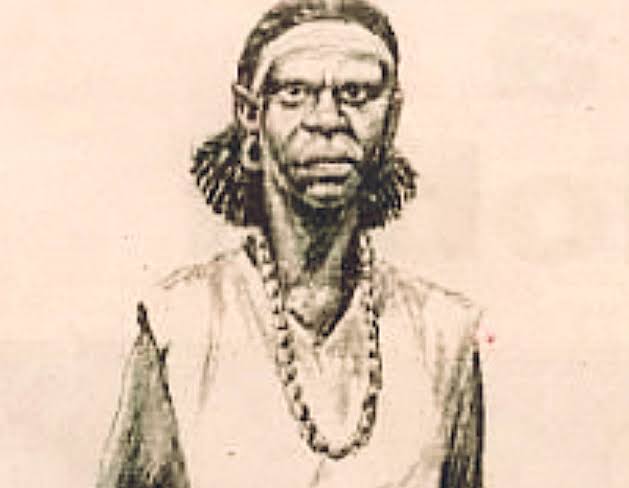Carlota Lukumi was an African woman who played a vital role in the slave uprising that took place in Cuba in the mid-19th century.
Her story of bravery, strength, and determination is a reminder of the struggle for freedom and the fight against oppression.
Carlota Lucumí was a courageous African-born enslaved Cuban woman of Yoruba origin who became known for her leadership in the slave rebellion at the Triunvirato plantation in Matanzas, Cuba during the Year of the Lash in 1843–1844.
Alongside her fellow enslaved Lucumí Ferminia, Carlota played a pivotal role in leading the slave uprising on November 5, 1843, at the Triunvirato sugar mill.
Despite her historical significance, little is known about her life due to the scarcity of reliable sources that document the lives of slaves, making it challenging to construct a complete understanding of her involvement in the 1843 slave rebellion, much less a detailed biography.
Scholars of Afro-Cuban history have struggled with the difficulty and availability of sources in archives, which has made it hard to piece together the details of Carlota’s life.
The majority of information surrounding Carlota and her contemporaries has come from slave testimonies obtained under investigations after rebellions, which presents a challenge in constructing a complete picture of her involvement in the rebellion.
However, despite the limited information available, Carlota’s role as a woman in an otherwise male-dominated sphere of slave revolt has made her a significant figure in Cuban history.
Additionally, the memory of Carlota has been utilized by the Cuban government in connection to 20th century political goals, most notably Operation Carlota, or Cuba’s intervention in Angola in 1975.
Furthermore, Carlota and the uprising at Triunvirato plantation are honored as part of the UNESCO Slave Route Project through a sculpture at the Triunvirato plantation, which has since been turned into a memorial and museum.
Carlota’s story is an example of the resilience and bravery exhibited by enslaved people in the face of oppression.
Her legacy continues to inspire countless individuals around the world to fight against injustice and stand up for their rights and the rights of others.
In this article, we will explore the life and legacy of Carlota Lukumi, examining her background, her involvement in the slave rebellion, and her impact on Cuban history.
We will also examine the cultural and historical significance of her story and how it continues to inspire people today.
Carlota Lukumi Background
Carlota Lukumi was born in the late 18th century in Yorubaland, now known as Nigeria, during the period when the region was being ravaged by the slave trade.
She was kidnapped and transported to Cuba, where she was sold into slavery.
She spent most of her life working on a sugar plantation in the Matanzas province of Cuba, where she was subjected to harsh conditions and brutal treatment common for slaves at the time.
Despite the oppressive environment, Carlota remained strong and resilient.
She was known for her intelligence, courage, and fierce spirit, which earned her the respect of her fellow slaves.
Over time, she became a leader among her people, organizing resistance and advocating for their rights.
The Slave Revolution of 1843
In the early 1840s, tensions were escalating among the slave population in Cuba.
Many were fed up with the cruel treatment they were receiving at the hands of their owners, and they began to organize and plan a rebellion.
Carlota was among the leaders of this movement, and she played a vital role in its success.
On November 5, 1843, Carlota led a group of slaves in an attack on the Triunvirato sugar plantation, which was owned by a Spanish planter named Francisco Calcagno.
The group of rebels, which consisted of around 400 slaves, armed themselves with machetes, axes, and other crude weapons and marched on the plantation, overwhelming the guards and freeing the other slaves.
The rebellion quickly spread to other plantations in the area, and within a few days, thousands of slaves had joined the uprising.
The rebels managed to take control of a number of towns and cities, including Matanzas and Cardenas, and they held their ground against the Spanish colonial forces that were sent to suppress them.
Despite being vastly outnumbered and outgunned, the rebels fought fiercely for several months, using guerrilla tactics and their knowledge of the terrain to their advantage.
Carlota was one of the most effective leaders of the rebellion, and her bravery and determination inspired many of the other slaves to continue fighting.
The rebellion was ultimately crushed by the Spanish army, and many of the rebels were executed or sold back into slavery.
Carlota herself was captured and put on trial, but she refused to back down or show any remorse for her actions.
The Triunvirato rebellion was part of a larger series of slave uprisings called La Escalera that occurred in Cuba during the 1840s.
This period of slave revolts was sparked by a range of factors, including the intensification of plantation-style farming, the increase in the number of enslaved people being brought to Cuba, and the spread of revolutionary ideas among people of color on the island.
The impact of Haiti’s independence movement and abolition of slavery, as well as earlier Cuban slave revolts, also contributed to the outbreak of La Escalera.
The Triunvirato rebellion was notable for its violent attacks against white overseers and plantation owners, and the extensive property damage that occurred.
The wave of repression that followed marked the end of a period of slave revolts throughout the first half of the 19th century in Cuba, until the start of the country’s independence movement against Spain in 1868.
The way in which La Escalera has been written about since its occurrence has been highly controversial, with some arguing that it was a massive government conspiracy to justify the repression inflicted upon people of color.
However, others have recognized the significance of La Escalera and the ensuing repression in inspiring new rebellious groups to form throughout the century in Cuba.
Overall, the Triunvirato rebellion and La Escalera are important events in Cuban history, representing a period of resistance against the oppressive conditions of slavery and the violent repression that followed.
They also shed light on the complex factors that contributed to the rise of slave uprisings in Cuba during the 19th century.
She was ultimately sentenced to death, and she was executed on October 11, 1844, at the age of around 60.
Legacy and Impact
Carlota, the African-born enslaved Lucumí woman, is best known for her leadership in the Triunvirato slave rebellion.
Although little is known about her personal life, she played a critical role in spreading the rebellion from Triunvirato plantation to the neighboring Acaná plantation, ultimately reaching a total of five plantations by the end of the revolt.
Her involvement in the slave uprising is significant because it challenges the typical perception of slave insurrections as being solely organized and carried out by men.
Alongside another enslaved woman named Firmina, Carlota helped to disrupt the gendered narrative surrounding slave rebellion.
Carlota’s memory has been utilized throughout history, particularly in connection to Cuba’s intervention in Angola in 1975 known as Operation Carlota.
Despite the lack of available sources, Carlota is recognized as a significant historical figure due to her leadership role in the rebellion and her status as a woman in a male-dominated sphere of slave revolt.
The Triunvirato rebellion was the last of a series of slave uprisings in Cuba known as La Escalera, which resulted in a wave of repression against enslaved people and free people of color by the Spanish colonial government and other whites.
It is believed that Carlota died in battle at the end of the brief revolt after it had spread to the San Rafael plantation.
Her legacy has been commemorated through a sculpture at the Triunvirato plantation, which has been converted into a memorial and museum as part of the UNESCO Slave Route Project.
Cuban scholars have often conceptualized Carlota as a martyr who fought for freedom and whose memory symbolizes the natural precursor to the Cuban socialist revolution of 1959.
By serving as a leader and being recognized as a martyr of the Triunvirato rebellion, Carlota has come to represent ideas of Cubanness and revolution in Cuban memory.
Her involvement in the rebellion challenges the traditional narrative of slave insurrection as being exclusively male-dominated and has helped to highlight the important role that women played in the struggle for freedom.
Carlota’s story serves as a reminder of the power of resistance and the importance of recognizing the contributions of women and other marginalized groups in shaping history.
Although the slave rebellion of 1843 ultimately failed, it had a significant impact on Cuban history and culture.
It was one of the largest slave uprisings in the history of the Americas, and it helped to spark a wider movement for abolition and independence in Cuba.
Carlota, in particular, became a symbol of resistance and liberation for many people in Cuba and beyond.
Her bravery and determination in the face of overwhelming odds inspired generations of activists, artists, and revolutionaries, and her story has been retold in countless books, songs, and films.
Today, Carlota is celebrated as a hero and an icon of resistance in Cuba and around the world.
Her story has inspired countless people to fight against oppression and injustice, and to stand up for their rights and the rights of others.
Her legacy continues to live on through various cultural and artistic expressions, such as music, dance, literature, and visual arts, which celebrate her courage and legacy.
In addition, her name has been used to honor many institutions, organizations, and public spaces throughout the world, including schools, museums, parks, and streets.
As such, Carlota remains a powerful symbol of the human spirit’s ability to overcome adversity and fight for freedom and justice.

